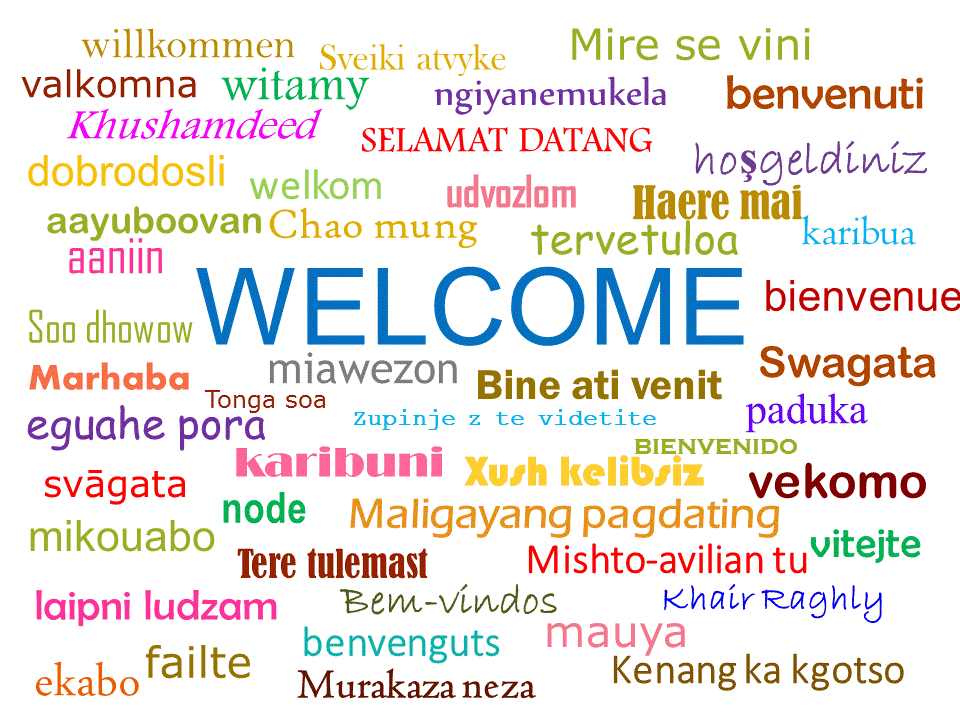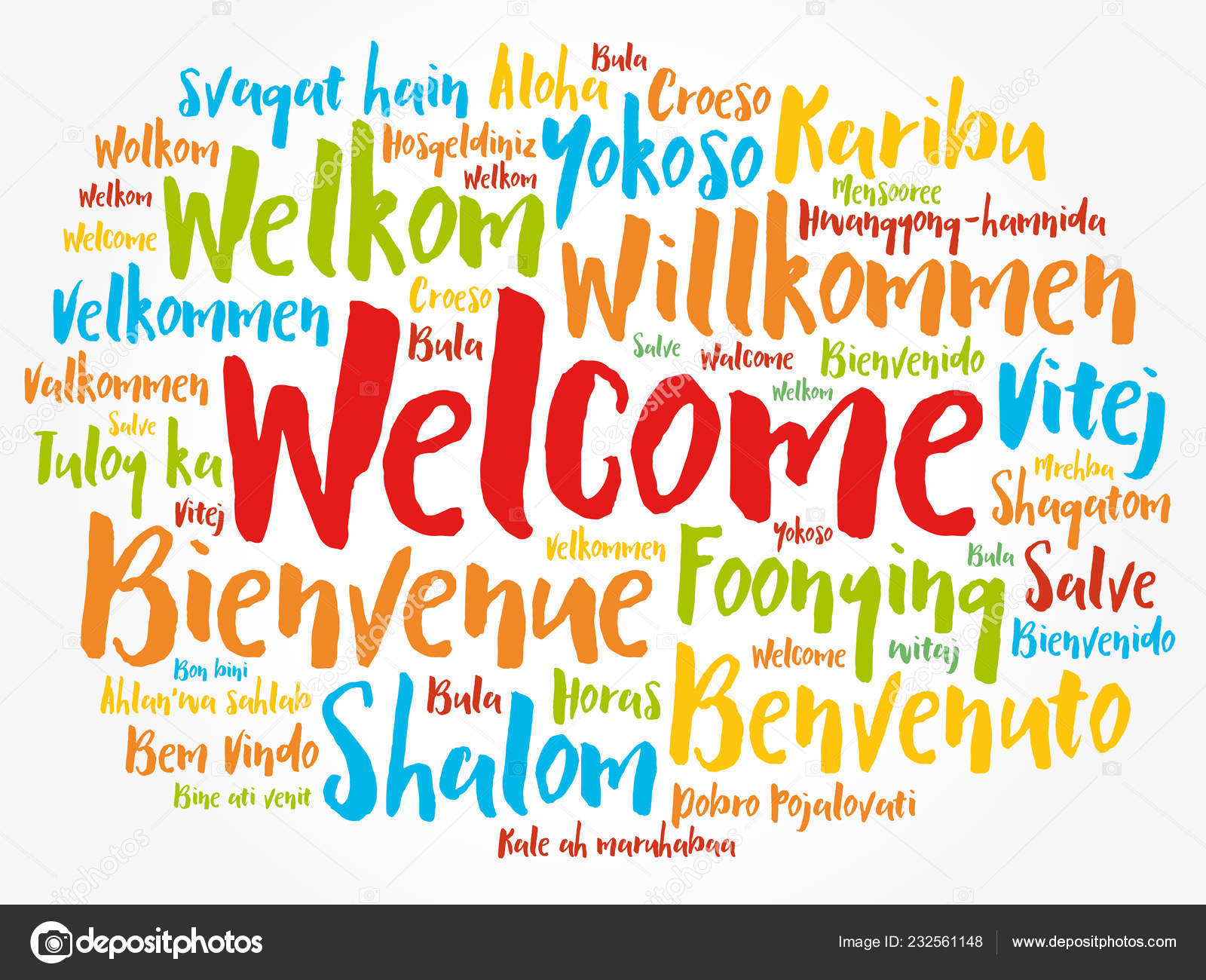Welcome in different languages sets the stage for this enthralling narrative, offering readers a glimpse into a story that is rich in detail and brimming with originality from the outset. The concept of “welcome” transcends linguistic boundaries, becoming a universal symbol of acceptance and belonging.
Join us as we delve into the cultural, linguistic, and social implications of this multifaceted expression, unraveling its significance in shaping human interactions.
Our journey begins with a cross-cultural comparison of “welcome,” where we’ll uncover the profound influence of cultural context in shaping its meaning. From the warm embrace of a handshake to the reverent bow, we’ll explore how different cultures express this sentiment, highlighting the potential for misunderstandings or misinterpretations due to cultural differences.
Cross-Cultural Comparison of “Welcome”
The concept of “welcome” holds significant cultural variations, reflecting the unique values, customs, and social norms of different societies. Understanding these cultural nuances is crucial for fostering meaningful and respectful interactions across cultures.
In some cultures, such as those influenced by Western traditions, “welcome” is often expressed through verbal greetings, such as “Hello,” “Welcome,” or “Good day.” These greetings may be accompanied by a handshake, a hug, or a nod of the head.
Non-Verbal Expressions
In other cultures, non-verbal cues play a more prominent role in conveying welcome. For instance, in many Asian cultures, a slight bow or a gesture of respect is considered a sign of welcome. In some Native American traditions, offering food or drink to guests is a customary way of welcoming them.
Potential Misunderstandings, Welcome in different languages
Cultural differences in expressing “welcome” can sometimes lead to misunderstandings or misinterpretations. For example, a handshake, which is a common greeting in Western cultures, may be perceived as overly familiar or even aggressive in some other cultures.
Linguistic Variations of “Welcome”: Welcome In Different Languages

The term “welcome” holds significant cultural and linguistic variations across different languages, reflecting the diverse ways in which different societies express hospitality and acceptance.
Etymologically, the word “welcome” traces its roots to the Old English word “wilcuma,” which itself is a compound of “wil” (will) and “cuma” (guest). This suggests that the concept of “welcome” originally denoted a willingness or desire to receive and accommodate guests.
Linguistic Roots of “Welcome” in Various Languages
The linguistic roots of “welcome” vary significantly across different language families. Here is a table comparing the phonetic and orthographic variations of “welcome” in several languages:
| Language | Phonetic Transcription | Orthographic Representation |
|---|---|---|
| English | /ˈwɛlkəm/ | welcome |
| Spanish | /bjenˈbenido/ | bienvenido |
| French | /bjɑ̃vˈny/ | bienvenue |
| German | /ˈvɪlkoːmən/ | willkommen |
| Chinese (Mandarin) | /huɑnˈjíng/ | 欢迎 |
| Japanese | /okageˈsama/ | おかげさま |
| Arabic | /marˈħaban/ | مرحبا |
| Hindi | /svāˈgat/ | स्वागत |
Social Implications of “Welcome”

The concept of “welcome” extends beyond mere words; it encompasses a range of social norms and expectations that shape how we interact with others. Welcoming behaviors can create a positive and inclusive atmosphere, fostering a sense of belonging and acceptance.
Conversely, unwelcoming or exclusive behaviors can have detrimental effects on social interactions, leading to feelings of isolation and disconnection.
Welcoming Behaviors in Different Social Contexts
The ways in which we welcome others vary depending on the social context. In formal settings, such as business meetings or official events, welcomes may be more reserved and structured, following specific protocols and etiquette. In informal settings, such as gatherings among friends or family, welcomes tend to be more casual and spontaneous, often involving physical gestures like handshakes, hugs, or kisses.
Impact of Welcoming or Unwelcoming Behavior
Welcoming behaviors can have a profound impact on social interactions. A warm and genuine welcome can make individuals feel valued and respected, creating a positive foundation for further communication and relationship-building. On the other hand, unwelcoming or dismissive behavior can discourage interaction and make individuals feel unwelcome or excluded.
In extreme cases, unwelcoming behavior can create a hostile or toxic environment, damaging relationships and undermining social cohesion.
Artistic Representations of “Welcome”

The concept of “welcome” has been a source of inspiration for artists, writers, and musicians throughout history. In art, the theme of welcome has been depicted in various forms, from paintings and sculptures to installations and performance art.
One of the most famous paintings that convey the theme of welcome is “The Welcome” by renowned French artist William-Adolphe Bouguereau. This painting depicts a young woman standing at the entrance of a home, her arms outstretched in a gesture of invitation.
The woman’s warm smile and open body language create a sense of hospitality and acceptance.
Sculptures
Sculptures have also been used to express the idea of welcome. For example, the “Welcome Stranger” statue in Ballarat, Australia, is a bronze sculpture of a gold miner. The statue is a symbol of the city’s history as a gold mining town and represents the welcome that was extended to newcomers during the gold rush.
Poems
In literature, the theme of welcome has been explored in countless poems. One of the most famous poems about welcome is “The New Colossus” by Emma Lazarus. This poem is inscribed on the Statue of Liberty and expresses the idea of America as a welcoming nation for immigrants.
“Give me your tired, your poor,Your huddled masses yearning to breathe free, The wretched refuse of your teeming shore. Send these, the homeless, tempest-tost to me, I lift my lamp beside the golden door!”
Songs
Music has also been used to convey the message of welcome. One of the most famous songs about welcome is “Welcome Home” by the American rock band Bon Jovi. This song is often played at sporting events and other gatherings to welcome people back home.
- “You’re welcome here, in my home I’ll share my bread, I’ll share my home I’ll share my life, I’ll share my love I’ll share my dreams, I’ll share my hopes”
These are just a few examples of the many ways that the concept of “welcome” has been depicted in art, literature, and music. These artistic representations serve as a reminder of the importance of welcoming others and creating a sense of belonging.
Last Point
As we conclude our exploration of “welcome” in different languages, we are left with a profound appreciation for its multifaceted nature. It is a word that transcends linguistic boundaries, becoming a universal symbol of acceptance and belonging. Whether expressed through a warm handshake, a reverent bow, or a heartfelt greeting, “welcome” serves as a bridge that connects people across cultures, fostering understanding and empathy.
FAQ Explained
What are some common ways to say “welcome” in different languages?
The word “welcome” has diverse linguistic roots, resulting in a wide range of expressions across languages. Some common examples include “bienvenue” in French, “bienvenido” in Spanish, “benvenuto” in Italian, and “wilkommen” in German.
How can cultural differences impact the way we welcome others?
Cultural context plays a significant role in shaping the norms and expectations associated with welcoming others. For instance, in some cultures, a handshake is considered an appropriate greeting, while in others, a bow or a kiss on the cheek may be more customary.
What is the social significance of welcoming behavior?
Welcoming behaviors have a profound impact on social interactions. They can foster a sense of belonging, create a positive atmosphere, and facilitate communication. Conversely, unwelcoming behavior can lead to feelings of isolation, discomfort, and even conflict.